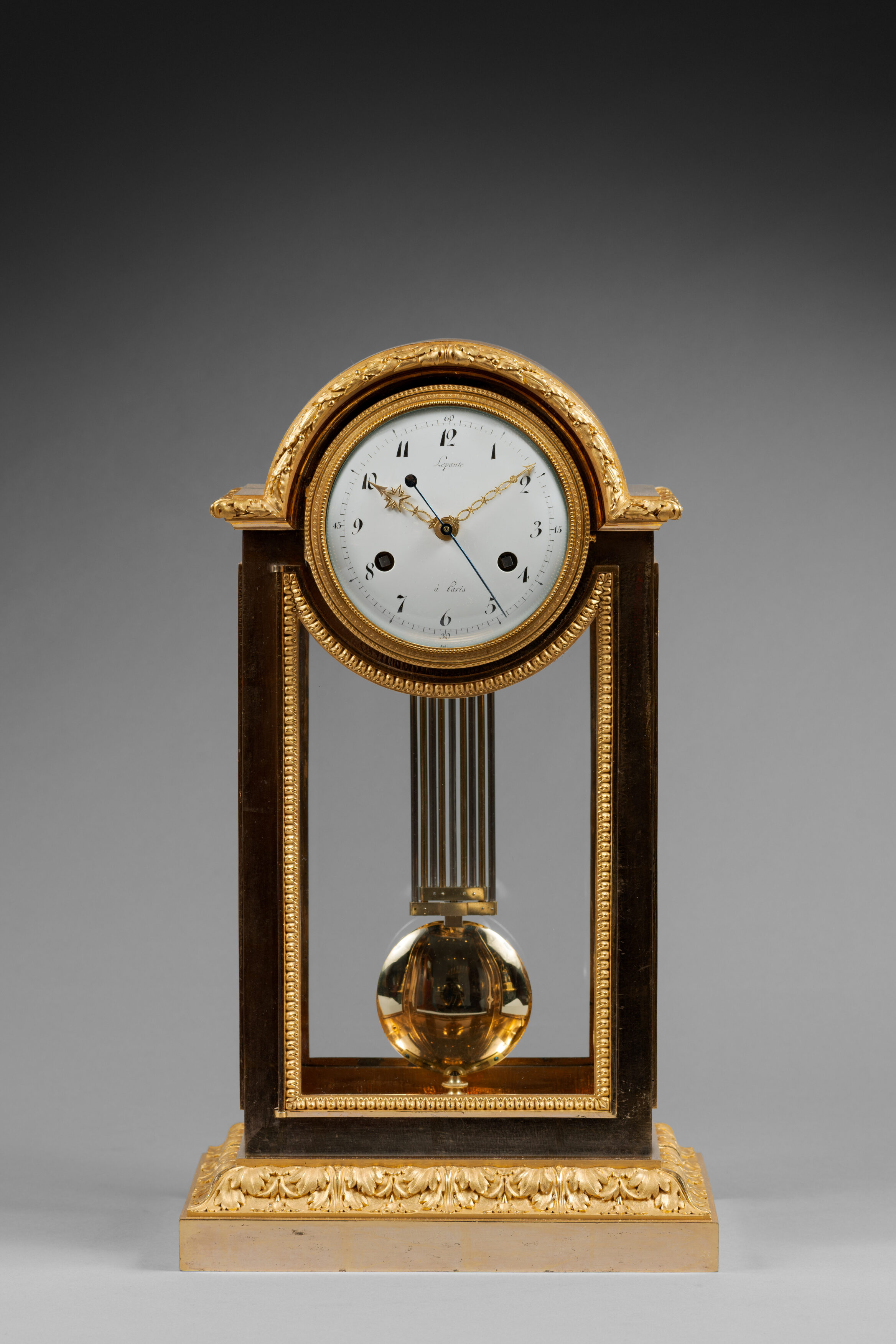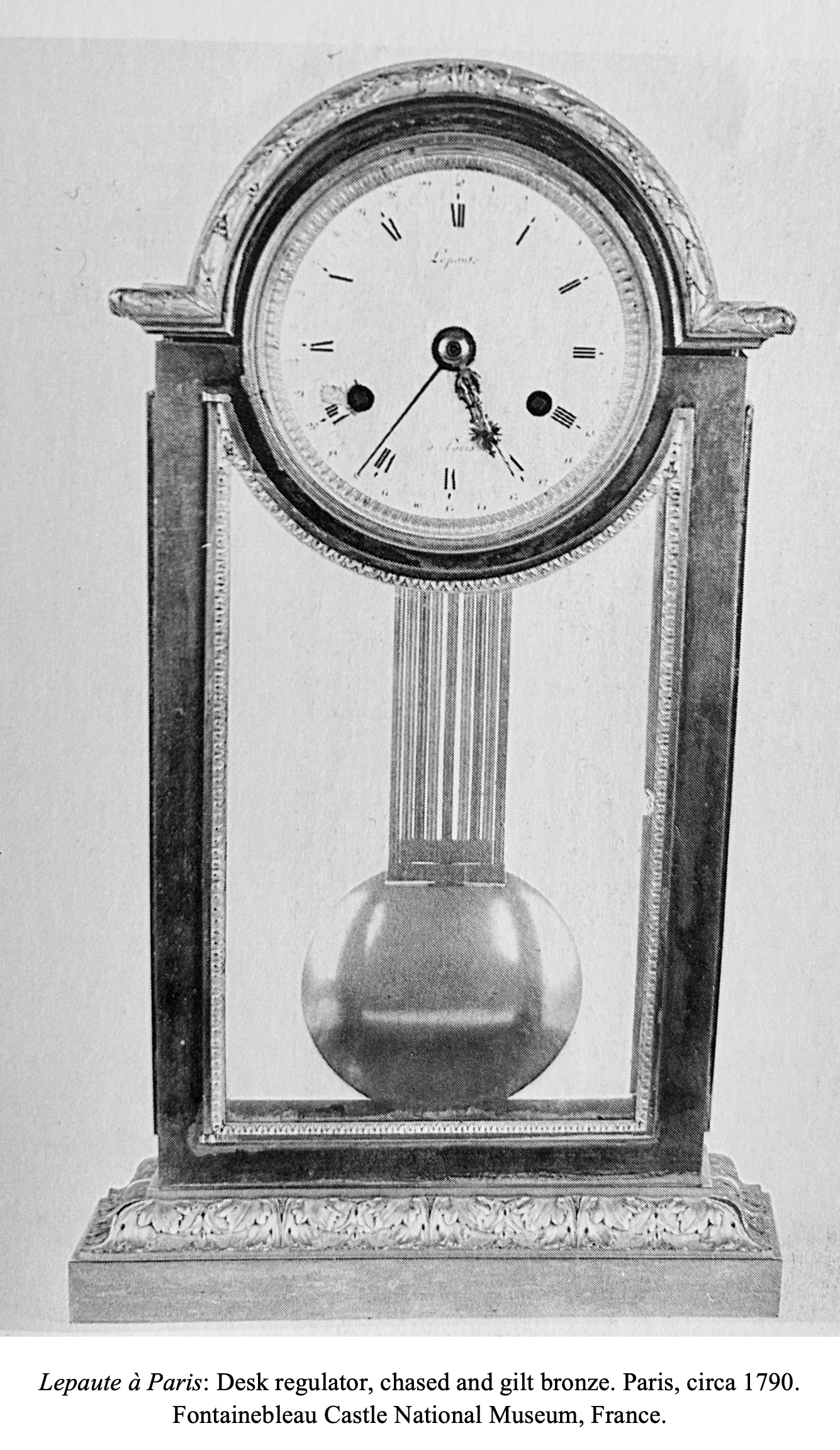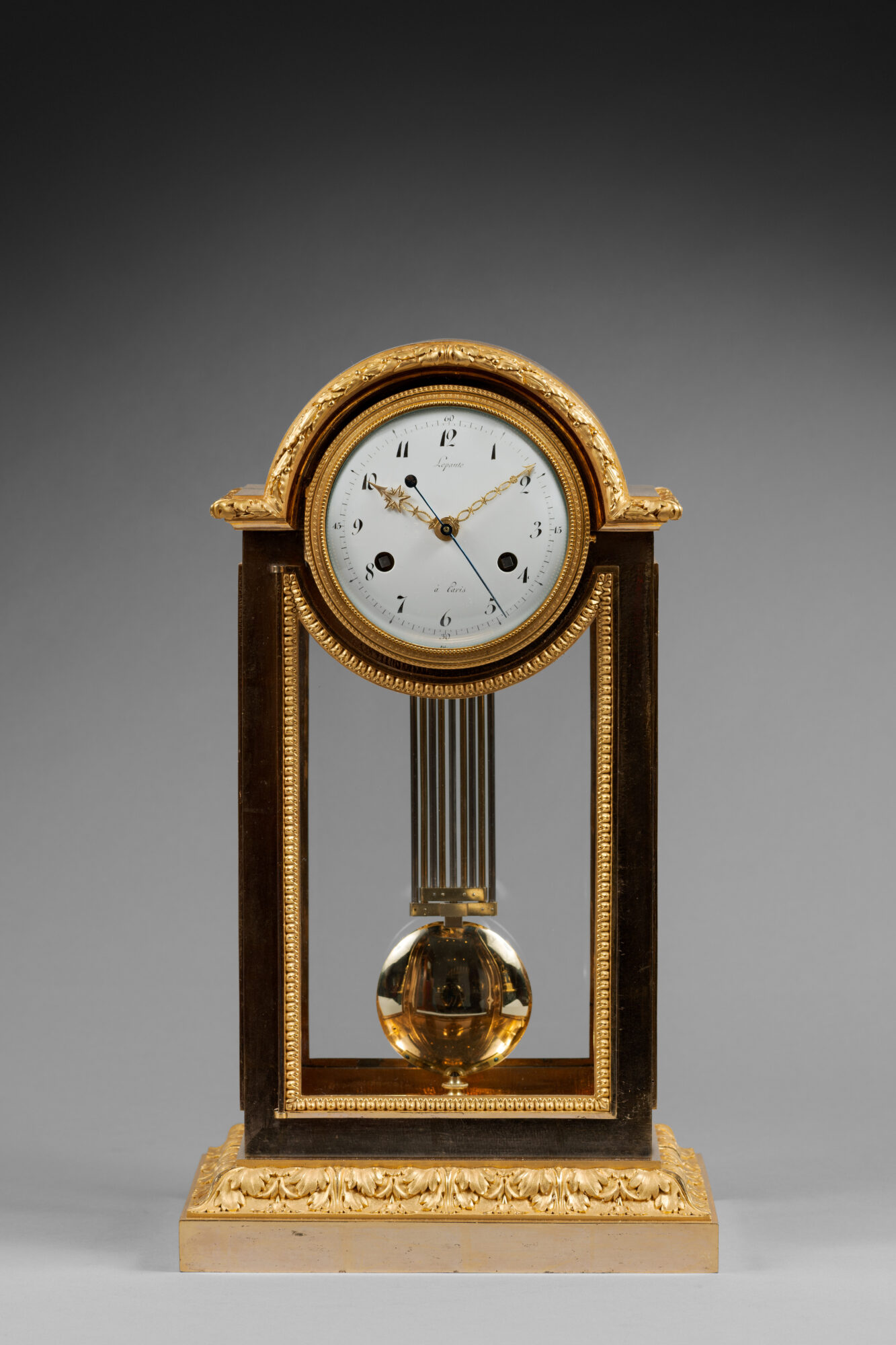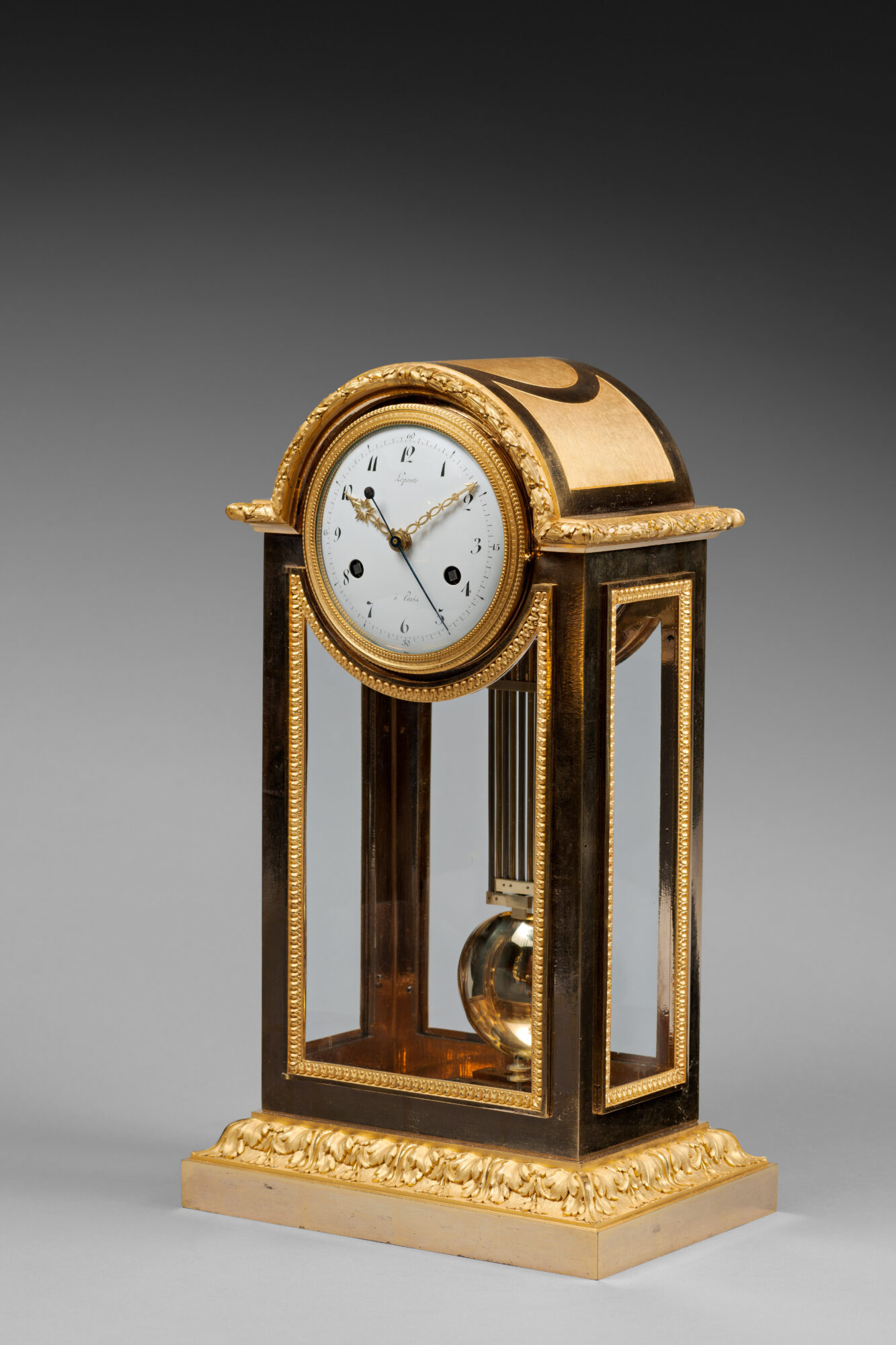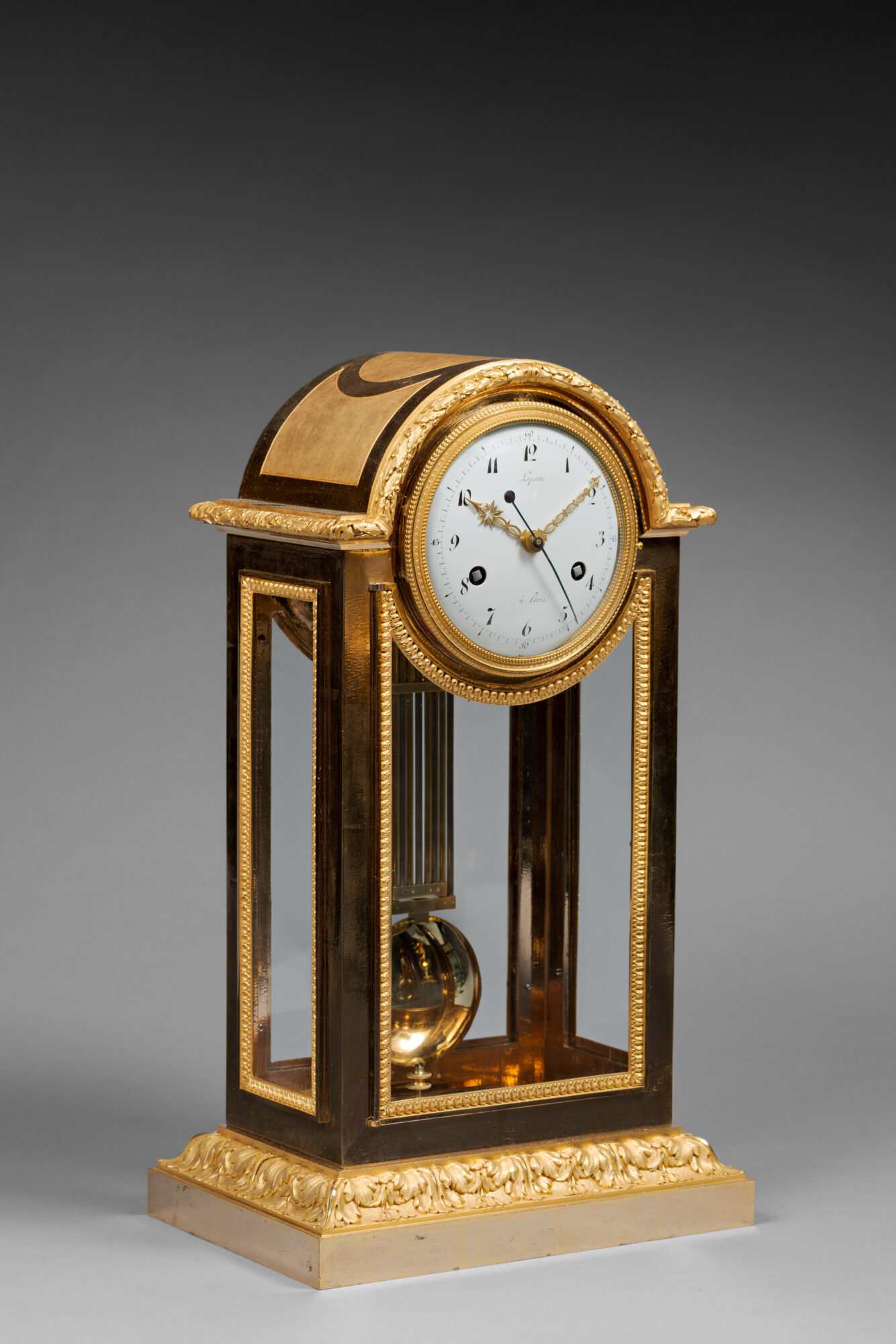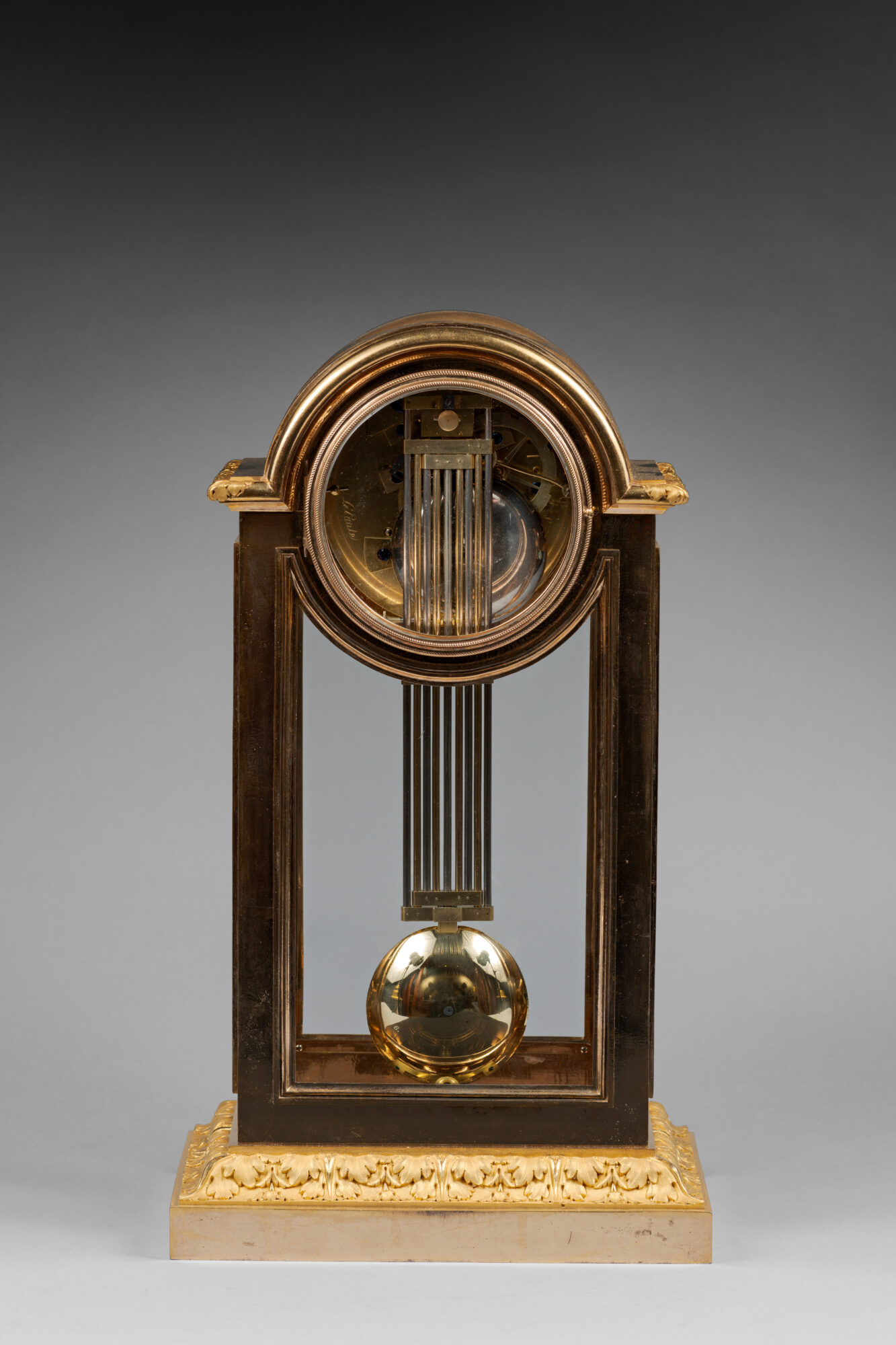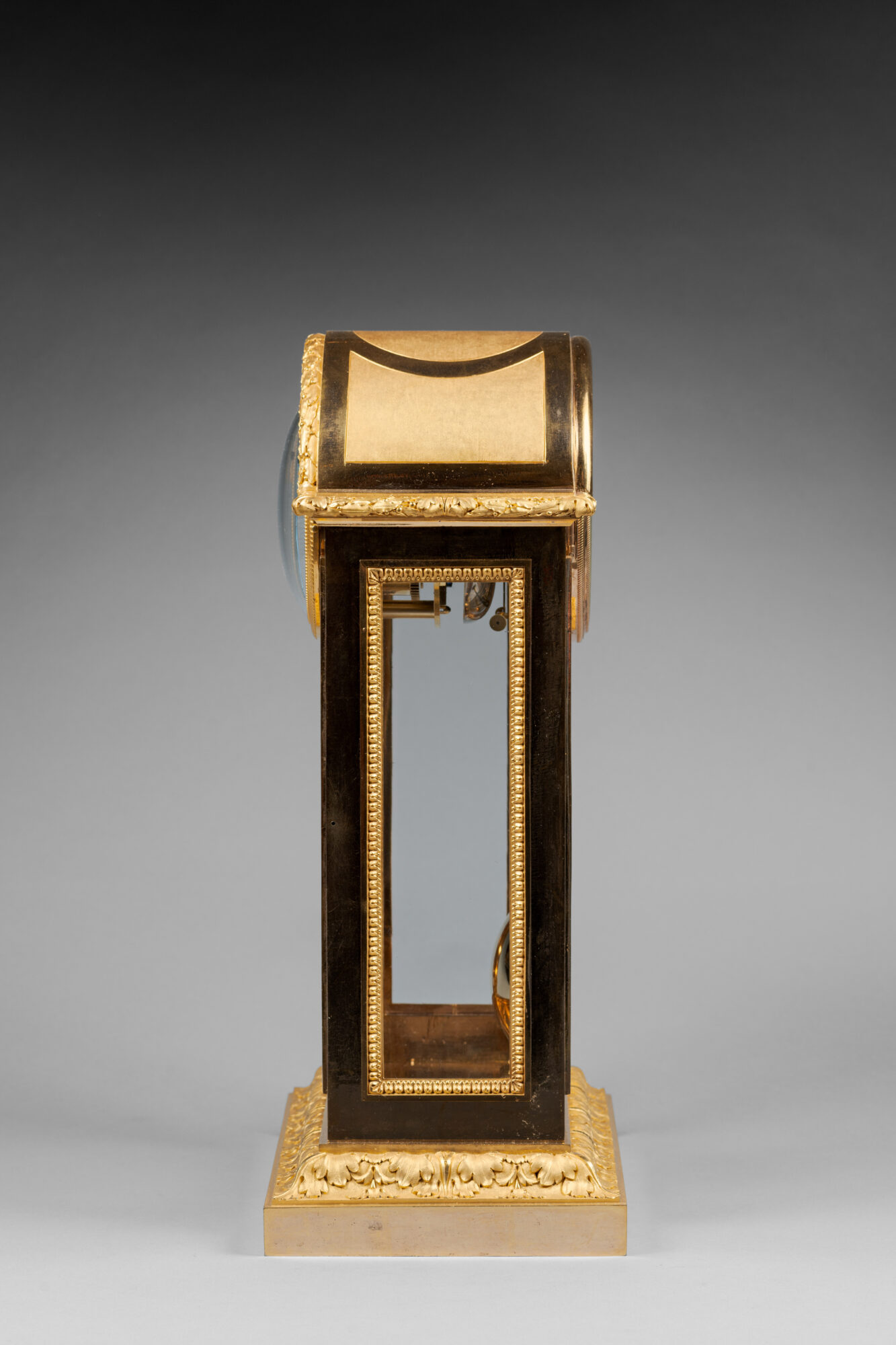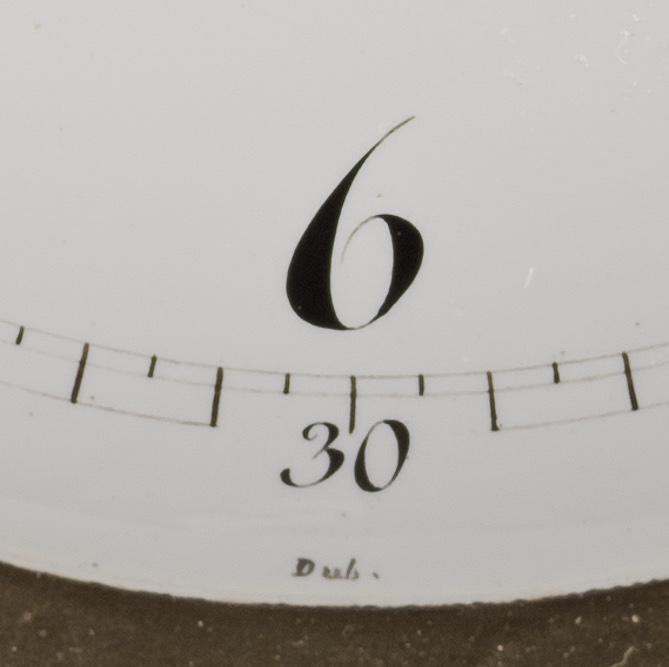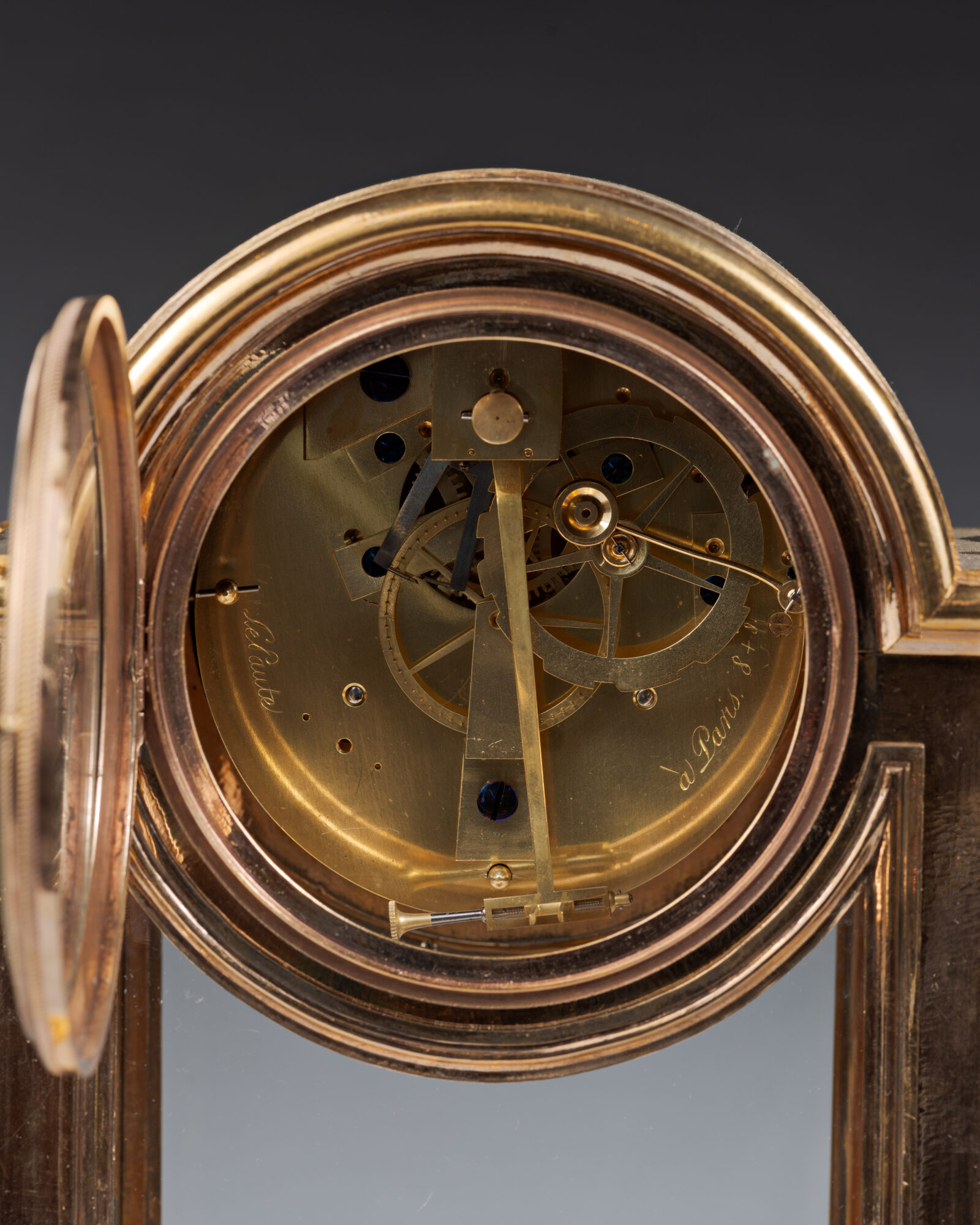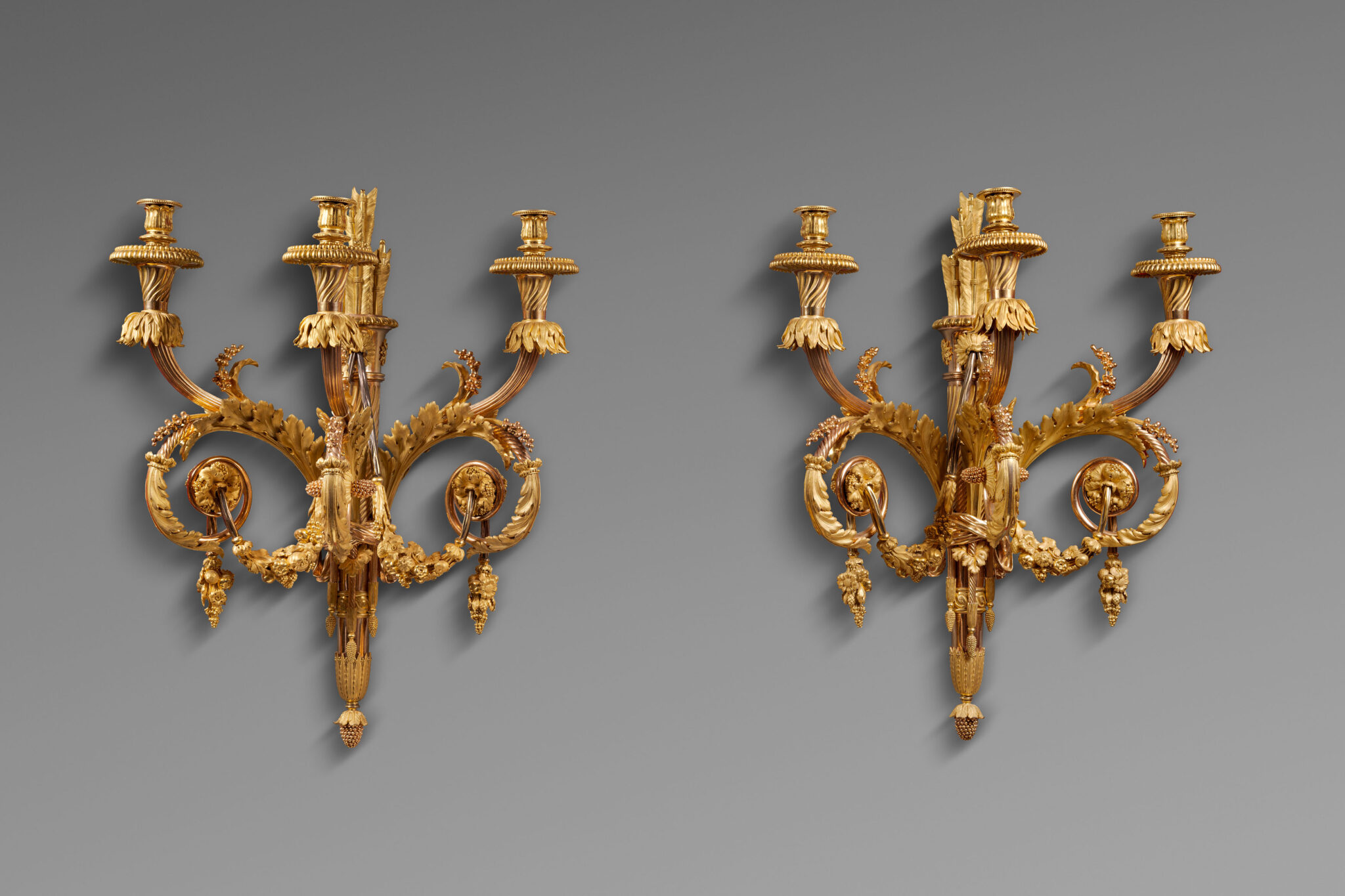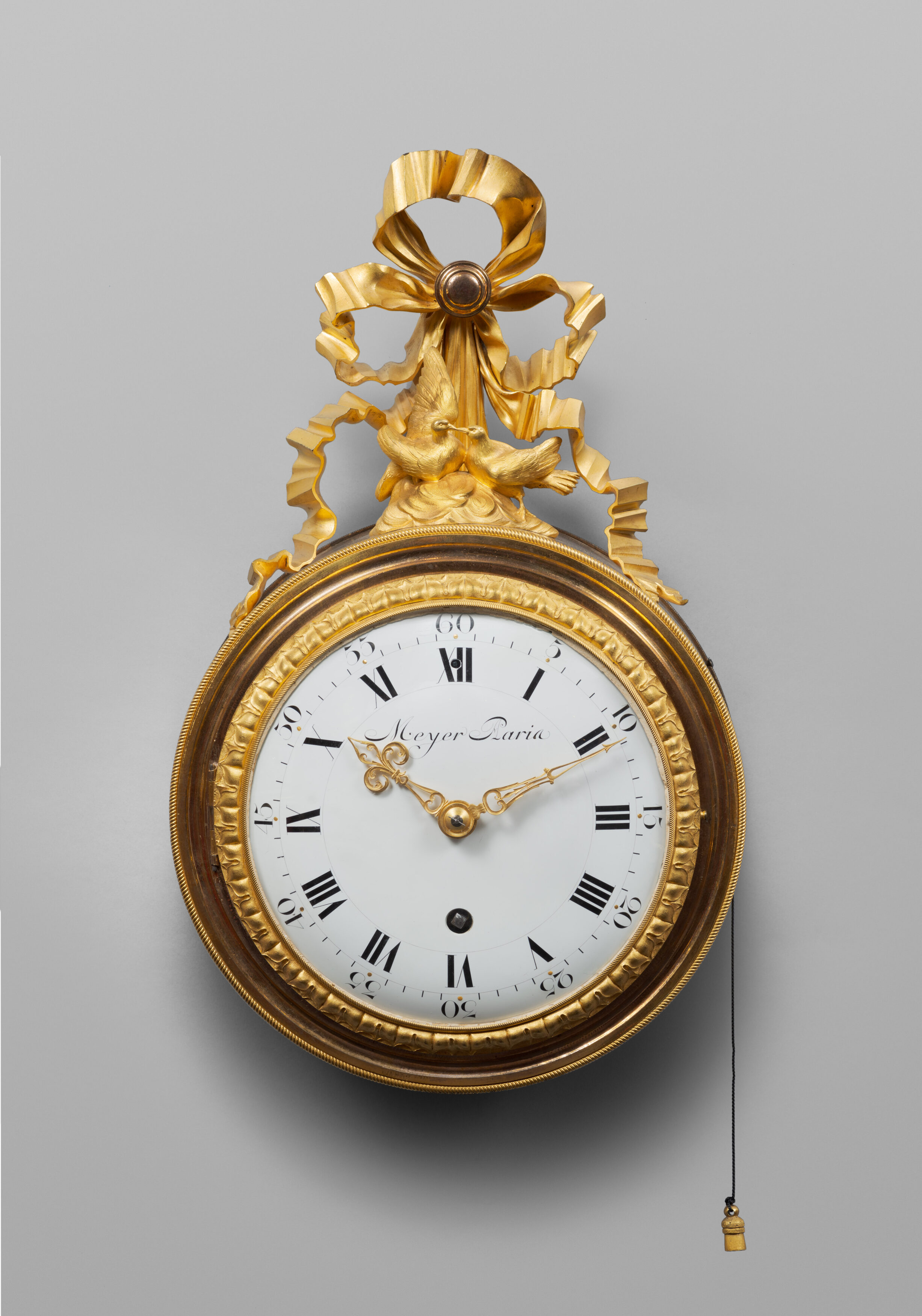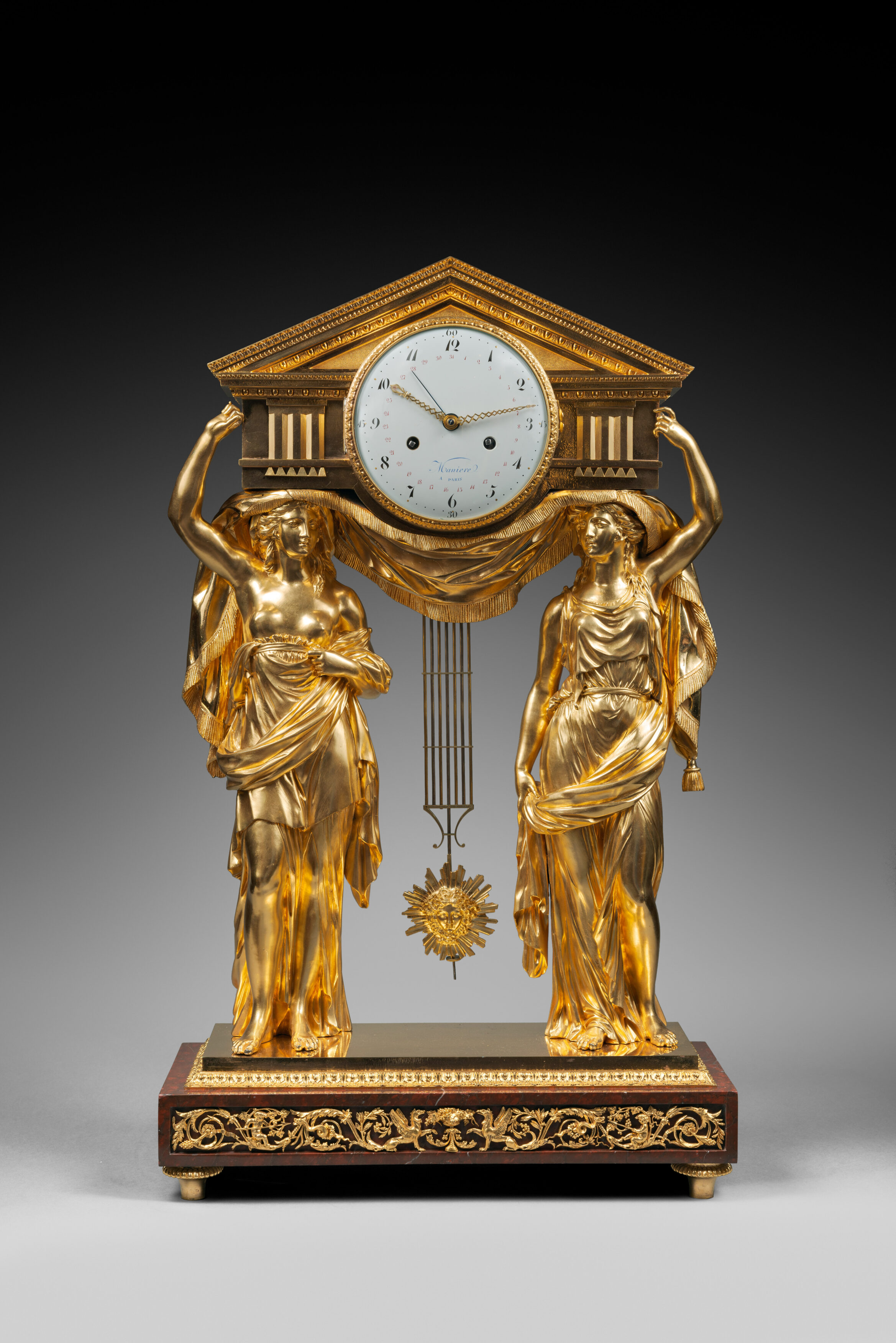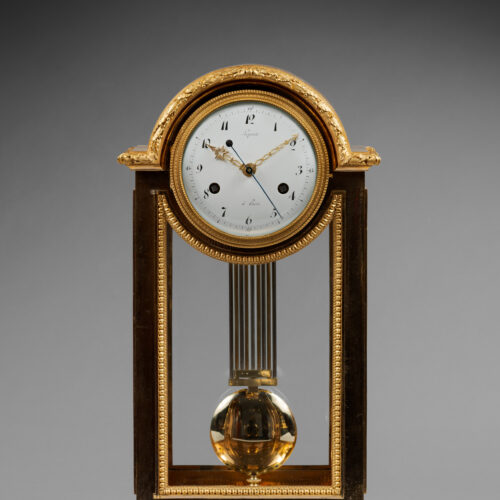Precious Desk Regulator made of Gilt Bronze with Matte and Burnished Finishing
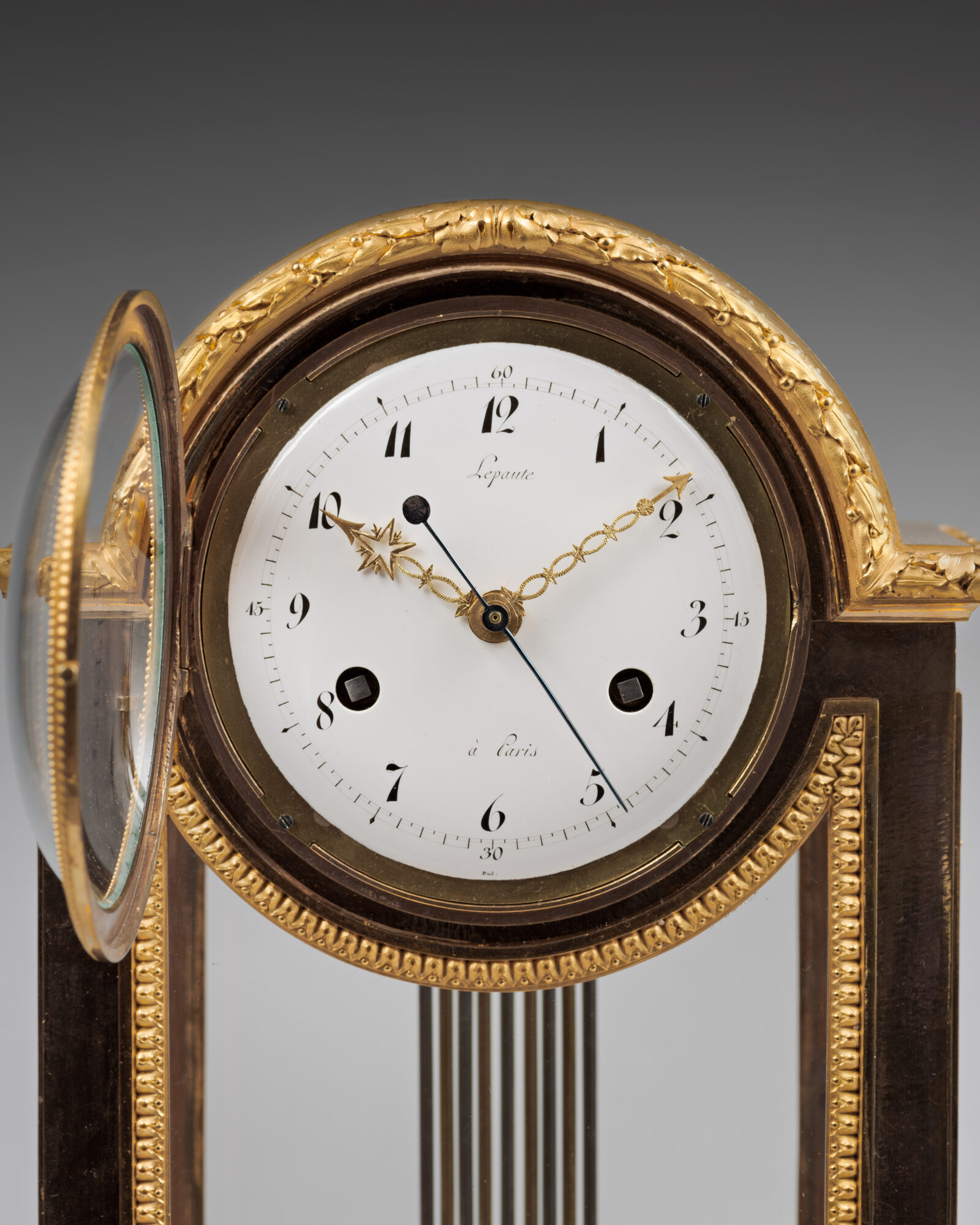
Dial and movement plate signed “Lepaute à Paris”, probably by clockmaker Pierre-Basile Lepaute, known as Sully-Lepaute
Enamel of the dial signed “Dub” by enameller Etienne Gobin, known as Dubuisson
Paris, late Louis XVI period, circa 1790
The round white enamel dial, signed “Lepaute à Paris” in its center and “Dub” at its base, indicates the Roman numeral hours and the Arabic fifteen-minute intervals by means of two pierced gilt bronze hands. It also has a blued steel central seconds hand. The hour and half hour striking movement, whose plate is also signed “Lepaute à Paris”, is housed in a rectangular arched architectural case made of finely chased gilt bronze with matte and burnished finishing. It features a bimetallic pendulum. The plain sides of the case, in the form of pilasters, enclose glass panels adorned with friezes of water leaves. The arch is decorated with laurel and acanthus leaf friezes, with plain bands on either side and matted reserves. The molded quadrangular base is adorned with an acanthus leaf frieze.
The elegant and sober design of the present rare desk regulator emphasizes the clock’s complex and precise mechanism, as well as the exceptionally fine chasing and gilding of its architectural case. While the bronze caster and chaser who executed the case during the final years of the reign of Louis XVI has not yet been identified, it was no doubt sold by the Lepaute workshop, for almost all known similar examples bear the Lepaute signature. The signature on the present clock, “Lepaute à Paris”, probably refers to Pierre-Basile Lepaute, known as Sully-Lepaute (1750-1843). Among the identical clocks known, one regulator is illustrated in P. Kjellberg, Encyclopédie de la pendule française du Moyen Age à nos jours, Les éditions de l’Amateur, Paris, 1997, p. 183. A second example, which was mentioned in the early 19th century as being in the Saint-Cloud Palace, is now part of the Mobilier national (illustrated in M-F. Dupuy-Baylet, De bronze et de cristal, objets d’ameublement XVIIIe-XIXe siècles du Mobilier national, Editions Faton, Dijon, 2020, p. 52-53, catalogue n° 11). Lepaute delivered a third example in 1804, intended for the pope’s bedchamber in the Château of Fontainebleau: a contemporary commentary stated, “The Execution of both the case and the movement of this clock are as close as possible to perfection…” (see J-P. Samoyault, Musée national du Château de Fontainebleau, Catalogue des collections de mobilier, 1. Pendules et bronzes d’ameublement entrés sous le Premier Empire, RMN, Paris, 1989, p. 67, catalogue n° 28).
Pierre-Basile Lepaute (1750 - 1843)
Pierre-Basile Lepaute, known as Sully-Lepaute, was one of the most important Parisian clockmakers of the late 18th and early 19th centuries. In the mid 1760’s he went to work with his uncles, who were also clockmakers, and began his training in the family workshop. In the early days he was in partnership with his uncle and cousin, in 1789 becoming sole owner of the workshop. Toward the end of the 18th century, he and his nephew Jean-Joseph Lepaute founded a new company that was active until 1811 and won a silver medal at the 1806 Exposition des Produits de l’Industrie. In 1811, his nephew opened his own workshop, while Pierre-Basile and his son Pierre-Michel (1785-1849) founded a new firm called “Lepaute et fils”. For several decades they were the principal suppliers of clocks to the Imperial and Royal Garde-Meuble; they were named, successively, Horloger de l’Empereur and Horloger du Roi.
Dubuisson (1731 - after 1820)
Etienne Gobin, known as Dubuisson, was one of the most talented Parisian enamellers of the reign of Louis XVI and the Empire period. Born in Luneville in 1731, he began his career as a painter on porcelain in Strasbourg and Chantilly. He then moved to Paris and worked at the Royal Sèvres porcelain manufactory from 1756 to 1759, specializing in the decoration of watch cases and clock dials. In the 1790s, his workshop is mentioned as being in the rue de la Huchette, then the rue de la Calandre around 1812. He appears to have retired in the early 1820s. He mostly signed his work “Dubuisson” or “Dub”, sometimes “Dubui”. Having worked with the most renowned clockmakers of his time, including Robert Robin, Kinable, and the Lepautes, Dubuisson was the main rival of Joseph Coteau. Specializing in watch cases and enamel dials, he was famous for his exceptional talent and his ability to render detail. His body of work, always of the highest quality, is considerable. To mention only a few of his pieces, some clocks bearing his signature are today in Pavlovsk Palace near Saint Petersburg, in the Louvre Museum in Paris, and in the Royal British Collection.
